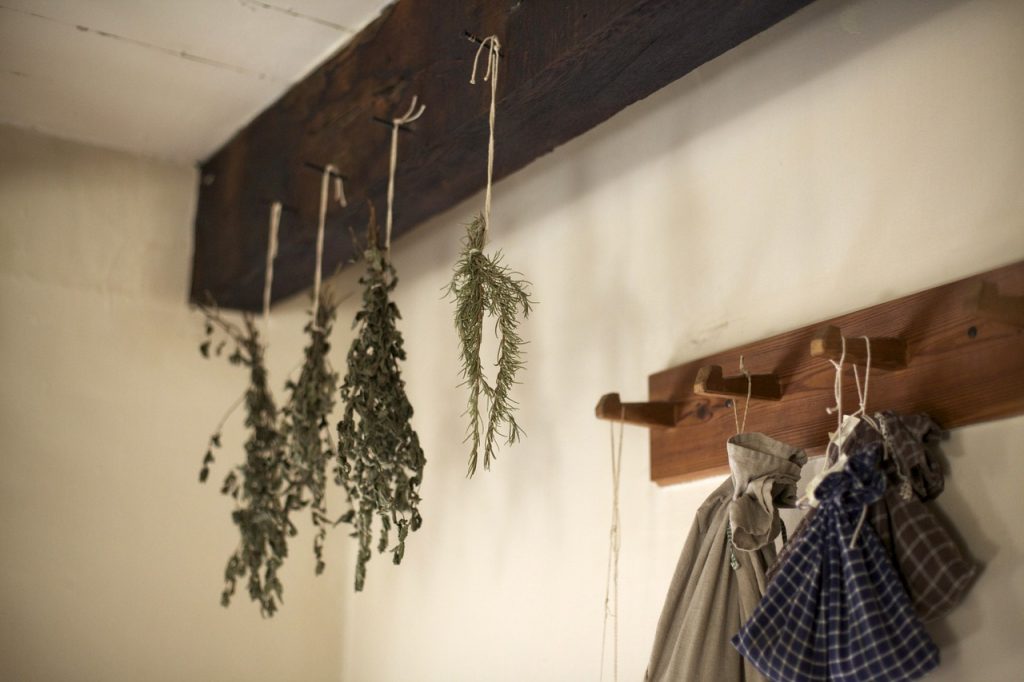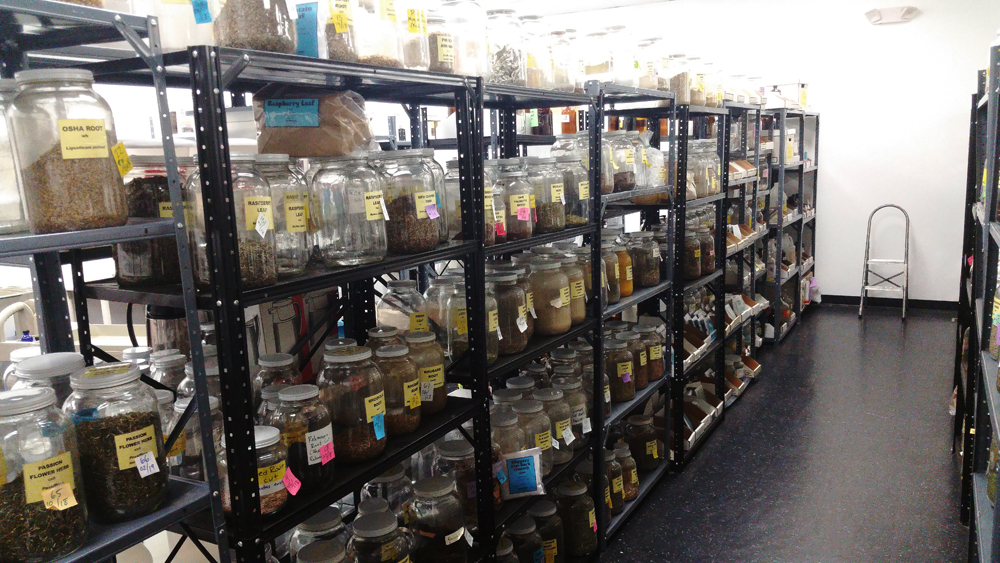While we don't sell fresh herbs, many customers will come in with questions about processing their own herbs that they grew in their garden. Some of the reasons to dry your fresh herbs are: Increased longevity of the herb, protection from mold/yeast, and the satisfaction of knowing where it came from.
Dried herbs will often last 2-2.5 years if processed and stored correctly. Powdered herbs won't stay quite as potent as cut leaves or root due to the extra processing and exposure to air/light.
—

Common Methods of Drying
Indoor Air-Drying
The most common method of drying a fresh herb is simply hanging it upside down, suspended from the stems in a bunch. Wrap Muslin, a mesh bag, or a paper bag with holes around the herbs. It's best to hang them in a warm and dry environment with decent airflow. You will need to tighten the binding keeping the stems together as moisture escapes the herb and they begin to shrink.
Screen Drying
Much like the Indoor Air Drying Method, Screen Drying still requires a warm room with adequate air flow. Instead of placing the herb upside down hanging, the herb is placed horizontally on a screen, often made from an old window screen or mesh stretched out. Place cheese cloth down first and then place the herb on top of the cloth. This method is commonly used to dry stems, sprigs, and leaves.
Dry Times
Drying herbs through these methods can take 3-4 days to several weeks depending on the conditions. Some herbs retain more moisture than others. Thin leaves will dry much faster than roots and thick leaves full of moisture. Other conditions that can affect the drying time of herbs include: Ventilation, temperature, humidity, drying method, etc, etc
Finishing Up
When the herbs are able to be crumbled and broken easy, they are done. Do not crush all the herbs at first, a whole leaf will retain it's oils better than a broken one. When the time comes use a mortar and pestle or simply your hands to break the herb into usable pieces.
If it seems that there is still moisture in the herb then you are more than likely correct, you're best bet is to set the herb back up to dry and wait a few more days until it is fully cured.
Storage

Once done, we recommend you store your herbs in an air-tight jar, away from sunlight and separated from high heat. Labeled with the herb's name and date of drying. Keeping track of when your herb was dried and the time it takes to dry it fully is extremely helpful if you plan to keep it up! It allows you to track the best methods, how long it takes to properly dry an herb, and find your favorites!
During storage of your herbs, keep an eye on the jar for any moisture that may collect. Also watch for any mold that may grow on your herb. If you notice your dried herb developing mold or yeast, throw out the herb and consider drying the next batch for a longer period before storage.
Drying your own herbs is a wonderful way to make fresh herbs last longer and give you a sense of accomplishment. Whether they be for spices or herbal teas, drying herbs is a great way to save money and enhance your health. We hope this helps get you started on drying your own herbs. There are more methods including using a microwave, oven, solar boxes, and dehydration machines. We find that Indoor Air Drying and the Screen Method will fetch the best results while staying inexpensive.
Joseph Zunich
9-28-2016
